- Izu Peninsula top
- General
- Earthquake and volcano
- Too many deer in Izu
- East
- Ito - its old buildings
- Anjin = Wlliam Adams and Ito
- Religious Charisma Nichiren
- Washtub race
- Yokikan - Spa ryokan
- Minami-Kaikisen: Auberge
- Ike and its paddy fields
- Summer has come!!!
- Inatori - fish, spa and more
- Central
- Banjo Waterfall
- Mount Amagi
- Shuzenji - old spa town
- Arabashiri - Bandai-Jozo
- Oomi Land - heart of Izu
- West and south
- Heda on the west coast
- Toi - Gold mine
- Matsuzaki - namako wall
- Izu-no-Chohachi - Plasterer
- Kumomi on the west coast
- Shimoda - Tojin-Okichi
- Cottage life
- Fishing in Usami
- Start of my fishing life
- Training camp in Amagi
- Cottage life / music&drinks
- Party in Izu - part 2
- Party in Izu - part 1
- Sunday morning concert
- Ice and snow in Amagi
- My summer house
- Restaurant and eatery
- Let’s eat Izu-Deer!
- Isui-an - exquisite soba
- Sugizen - big prawn fry
- Sayang - Bali restaurant
- Restaurant Tanaka
Ito - its old buildings
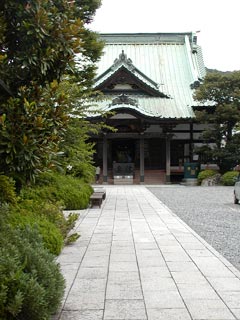
Butsugenji - An influential sect founder Nichiren spent here several years under persecution.
Graves of Ito family are now in the templeyard of Saiseiji.
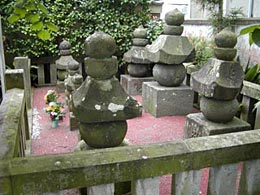
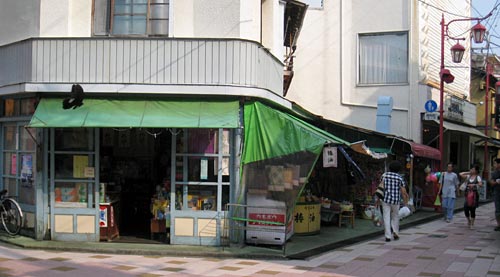
This old-fashioned grocery used to sell numerous camellia-oil products.
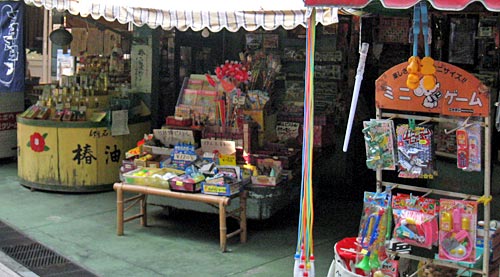
The same shop taken from another angle
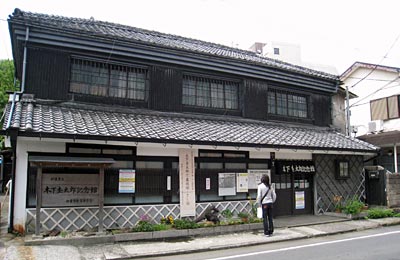
The birth house of Mokutaro Kinoshita (1885-1945), a famous poet.
Most of the old institutions, mostly temples and shrines, exist in the outskirts of the town and we can enjoy them there. On the other hand there are also a number of interesting buildings in the city area of Ito. Maybe "Tokaikan" is the most outstanding building which stands just beside the Matsukaw River. It was built in 1928 and served as lodging for spa guests. The hotel ceased to operate and the building was donated to the municipality. It is now taken over and restored by the city and serves as a sort of museum. People can see the old hotel facilities free of charge and enjoy its restaurant and public bath. Its neighbor "Inaba", which is managed by a relative of the earlier owner of "Tokaikan", is also a beautifully constructed wooden building and fortunately still functioning as hotel.
On the opposite bank of the river there are a few nicely built restaurants and a tea room and the whole area builds the attracting point of the Ito city. This is good. However, I regret that the scenic attraction of Ito is limited to this short section - it extends only 100m or so - of the Matsukaw River. I wonder why people in Ito do not want to create or keep a beautiful city center as a core of Ito"s unmistakable charm.
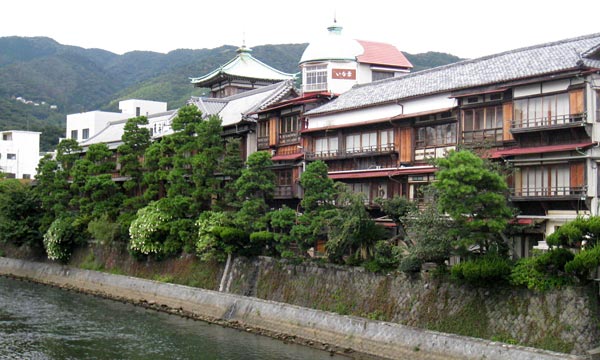
Tokaikan (left) and Inabaya (right) are facing the River Matsukawa.
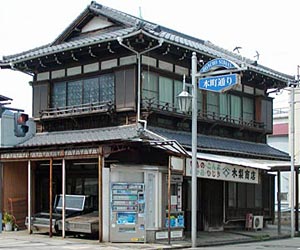
"Kinashi" is selling "kezuribushi"
 There are also other interesting buildings in the center of Ito such as the birth house of Mokutaro Kinoshita - an old rice shop. The charm is not limited to famous buildings. There is a beautiful two story building of "kezuribushi"(*) shop. I also know impressive old buildings of tatami (straw mat) shop, textile shop, vegetable shop and so on. However, they do not seem to be respected and taken care of by the people. They are then suddenly torn down and replaced by ordinary concrete buldings.
There are also other interesting buildings in the center of Ito such as the birth house of Mokutaro Kinoshita - an old rice shop. The charm is not limited to famous buildings. There is a beautiful two story building of "kezuribushi"(*) shop. I also know impressive old buildings of tatami (straw mat) shop, textile shop, vegetable shop and so on. However, they do not seem to be respected and taken care of by the people. They are then suddenly torn down and replaced by ordinary concrete buldings.(*) "Kezuribushi" is shavings of dried bonito or mackerel and used widely in Japan as instant and delicious soup stock.
On the previous weekend I was surprised and shocked to see a concrete foundation where there was an elegant old-fashioned camellia-oil shop. I saw the old building only two weeks ago and now it did not exist any more. I visited the tentative shop and asked its young owner why the beautiful old building had to be demolished. He answered with regret that his grand mother could not stand the inconvenience of the old building any more, though many people tried to persuade her to keep the old house.
 A picture taken a few weeks later from the same angle as the picture left. |
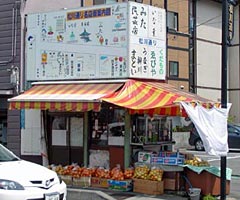 A tiny vegetable stall |
Though I understand the mentality of our fellow countrymen as I explained above, I personally want to see a beautiful city center with a public square and spacious pedestrian zone surrounded by attractive wooden houses.
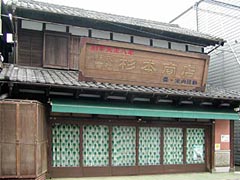 A tatami shop in Sisido Street |